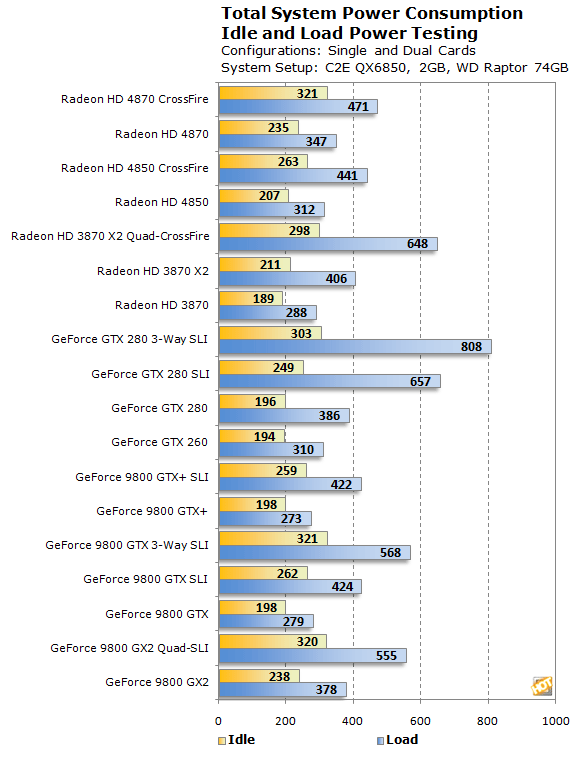ATI Radeon HD 4850 and 4870: RV770 Has Arrived
We'd like to cover a few final data points before bringing this article to a close. Throughout all of our benchmarking and testing, we monitored how much power our test systems were consuming using a power meter. Our goal was to give you all an idea as to how much power each configuration used while idling and under a heavy workload. Please keep in mind that we were testing total system power consumption at the outlet here, not just the power being drawn by the motherboards alone.
|
|
|

Both of the new Radeon HD 4800 series cards consumed somewhat more power than the NVIDIA GeForce 9800 GTX+ and standard 9800 GTX, while idling and under load. Overall consumption was surprising high for the 4800 series cards, relatively speaking, and was actually higher than even the Radeon HD 3870 X2.
The power consumption results jibed with temperature readings we took during testing. As we mentioned earlier, the Radeon HD 4850 idled at around 80'C and the 4870 - even with its more powerful dual-slot cooler - idled at about 77'C. And during extended benchmark sessions, both cards got excessively hot to the touch. We did not experience any heat related instability (or any instability for that matter), but be wary of the heat output of these cards. If you like what you've seen so far and plan to buy a 4800 series card, you must have adequate case cooling to keep the cards humming along within acceptable limits.
While heat was a definite concern with both Radeon HD 4800 series cards, noise was not. As is typical with current generation Radeons, both cards spun up considerably when out test system was powered up, but the fans spun down to near inaudible levels once the drivers were initialized within the OS. And during testing neither cards' fan got very loud at all.






